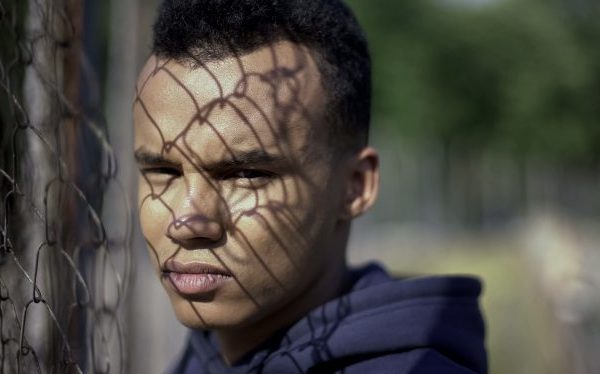
Next month, councils will be banned from placing children in care aged under 16 in unregulated placements, the first stage of a planned reform of such ‘independent’ and ‘semi-independent’ accommodation.
Stage two concerns the vast majority of such placements, for those aged 16 and 17, for which the government has proposed national standards, backed up by regulation by Ofsted, but on a more minimal basis than for children’s homes.
The plans are the Department for Education’s (DfE) answer to shocking stories of young people being placed in caravan parks, barges or tents, in the same provision as adults struggling with addiction and mental ill-health or in settings that make them “easy prey” for exploitation in high- crime areas.
However, while there is widespread agreement on the inappropriateness of placements of this nature, the sector is split on the government’s proposed solutions. Children’s rights charity Article 39, the most vocal critic, has lodged a legal challenge to the ban on placing under-16s in unregulated accommodation, on the grounds that it discriminates against 16- and 17-year-olds.
However, the Association of Directors of Children’s Services (ADCS) has repeatedly raised concerns about the prohibition exacerbating the issues councils already face in finding placements for children with more complex needs in children’s homes, secure care or specialist foster placements.
Analysis of responses to the consultation on stage two show that this split, between charities concerned about a two-tier system and council leaders worried about supply of placements, persists, though the latter are more supportive overall.
Care or support?
The DfE put forward 12 indicators to determine whether a provider is offering ‘care’ (and therefore should be registered as a children’s home) or ‘support’ for 16- and 17-year-olds, meaning it would be regulated under the planned new regime. Indicators that a setting provided support included that young people could leave, or go on an overnight stay, without permission, had full control over their finances and clothing and were regularly left without staff supervision. Where staff had access to medical records, there was a sanctions policy that went beyond house rules and the setting had responsibility for aftercare, this would indicate that it provided care.
Respondents were split on the calibre of the indicators themselves. While the Local Government Association (LGA) and ADCS, in their joint response, described them as “broadly helpful” in distinguishing between care and support, looked-after children and care leaver charity Become labelled some of them “clearly nonsensical and paradoxical”. It pointed out that existing children’s home regulations said that young people should be given appropriate freedom over day-to-day choices, such as over clothing, while those in independent or semi-independent accommodation rarely had full control over their finances.
There was more agreement over the problem of drawing a hard and fast line between care and support, given children and young people’s fluctuating and individual needs.
Fluctuating needs
The LGA and ADCS said that a teenager may require elements of care one week but not the next, while Become said young people’s circumstances and vulnerabilities “can change considerably in short spaces of time”.
Become and children’s rights charity Article 39 said the answer to this was to ensure all providers were required to offer ‘care’ to children in their accommodation based on their individual needs – essentially for them all to be treated as children’s homes.
However, the ADCS, LGA and the Independent Children’s Home Association (ICHA) did not oppose the care/support distinction but instead stressed that providers of ‘support’ should have the flexibility to respond to young people’s needs for ‘care’.
“Strict definitions” may “disincentivise” providers from offering support around areas like budgeting or managing health needs in case they crossed the boundary into providing care, the ADCS and LGA warned.
In its consultation, the government proposed referring to regulated independent or semi-independent placements as “supported accommodation for older children”. There was general disagreement with the government’s proposed term, but again, for different reasons.
Focus on transition
Many young people in this type of accommodation would not see themselves as “older children”, the LGA and ADCS said. Both they, and the ICHA, proposed dubbing it “supported accommodation for young people” to reflect the fact that it was for those transitioning into adulthood, who would be expected to have a level of independence and responsibility.
In an interview with Community Care, ICHA deputy chief executive Liz Cooper said focusing on transition could enable the currently unregulated sector to specialise in this area and ensure a young person is referred because they are ready for transition, rather than it being the only available or affordable option.
However, for Become and Article 39, the problem was that the term risked validating the practice of placing 16 and 17-year-olds in currently unregulated placements, which they said was councils’ response to insufficient appropriate placements rather than a reflection of young people’s needs.
Become said it could “establish an additional ‘cliff edge’” like that already experienced by many care leavers at 18.
The charities suggested terms such as ‘homes for children and young people’ or ‘children and young people’s residential care’ as possible options, but stressed the importance of consulting looked-after children on the issue.
‘Need for high expectations’
The DfE proposed four standards for supported accommodation – covering leadership and management, protection, workforce planning, and location assessments – compared with nine for children’s homes.
Both Become and Article 39 said the existing children’s home quality standards, modified where required, should be used instead.
The former said children and young people it had consulted emphasised the importance of some of the ‘missing’ children’s home standards for those in supported accommodation, including those covering education, developing positive relationships and the quality and purpose of care.
While they saw the importance of supported accommodation preparing young people for adulthood, the charity said the young people felt it was “more helpful to start from a higher expectation of care and support and then reduce as needed”.
Related articles
The British Association of Social Workers (BASW) told the previous consultation on this topic that standards which considered “the holistic and long-term needs of children” would be welcome. However, many areas BASW members suggested for inclusion – among others: policies on visitors to reduce the risk of drug dealers entering; independent living skills training; a minimum frequency that young people should be seen; procedures for young people who self-harm, use alcohol and drugs and for bullying – are not covered in the proposed standards.
Risk of higher costs and providers existing market
The ADCS and LGA called the proposed standards “reasonable”, though said they should be supplemented to include policies for young people who go missing and a requirement to consult the police about the location of accommodation, which is often “in exactly the wrong areas”.
However, they also raised concerns that that supported accommodation providers may look to recoup the costs of meeting new national standards via their prices.
“This is exactly what happened when new regulations and quality standards were introduces in residential children’s homes several years ago,” they said.
Capacity challenges
They also warned there was a risk that existing capacity challenges would be exacerbated by some current providers ducking out of the market if meeting the new standards were too onerous.
The associations also made this point in relation to the registration and inspection regime for supported accommodation.
“Any future arrangements must guard again the potential for recreating the difficulties children and young people with the most complex needs currently face in terms of access to registered children’s homes; homes will not accept them for fear of jeopardising their Ofsted rating, or costs of placements are driven up by the few providers that are willing to accept that risk,” they said.
The DfE has put forward two options for registering and inspecting providers: on a per setting basis, as is the case for children’s homes, or on a per provider basis. The first would require each setting to have its own registered manager accountable to the regulator, and Ofsted would have powers of entry to the setting to carry out inspections and be able to take enforcement action against it. By contract, provider-based regulation would focus on the systems that providers set up to ensure they met national standards, with a sample of settings subject to inspection.
Inspection options
The ADCS and LGA said they favoured a provider-based regime, which would complement local authority monitoring arrangements, warning that a settings-based approach would be too burdensome for providers “and have the potential to destabilise [their] workforce”.. Provider based inspection would allow more flexibility for making crisis placements, they said.
However, both Article 39 and Become backed settings-based inspection in order to ensure that the experiences of children and young people could be adequately assessed.
Article 39 said inspecting only at provider level would focus mainly on the “perspective and presentation” of the organisation running the service, rather than young people’s feeling about their home and the staff employed there. “It gives an advantage to larger providers and builds in safeguarding risks as the larger the provider, the more they will be able to hide poor practice and unsuitable living environments from inspectors,” its response continued.
It is not currently clear what a local authority will be expected to do if it cannot find a suitably regulated placement, either for a child under 16 after September, or under 18 when the additional reforms come in.
The ADCS and LGA said they expected the reforms to lead to an increase in the use of bespoke unregistered placements in emergency cases where councils lacked in-house provision, given providers’ “unwilling[ness] to work with our most complex young people”.
A continuing need for unregulated care?
BASW members, in response to the last consultation, stressed that young people themselves may reject regulated options.
“Occasionally, for extremely complex and hard to engage young people, they might not accept what is available amongst regulated options and vote with their feet. In these cases, it may be more pragmatic to accept that they will be staying in an unregulated setting and try to work with them there rather than fight constantly to get them back into regulated setting and risk them absconding,” members told the association.
A number of responses also highlighted that the new rules could cause disruption and disadvantage young people in the short term. The ADCS and LGA referred to the additional pressures on placements caused by the pandemic and suggested a transition period for the September ban to “prevent further upheaval and change for young people who may be settled and making progress in their current placement”. No transition period is provided for by the regulations bringing the ban into force.
Similar anxieties had been raised by BASW members about what would happen when new standards are implemented for supported 16+ accommodation. “Some placements will not meet these standards and children may be settled there. It will mean children will have to be moved which may impact on education, seeing family and friends, leaving staff they have good relationships with. Providers will need enough time to implement these standards,” the association summarised from its survey.
Future reform
The reforms are coming into force against the backdrop of two significant reviews into children’s social care: the government-commissioned care review, led by Josh MacAlister, and the Competition and Markets Authority’s separate study into market for fostering, children’s home and unregulated provision.
Both studies are due to report next year and will be expected to answer the key challenge thrown up by the latest consultation: raising the quality of placements for children and young people in care while also addressing the shortfall in supply.
As a result, more reform in this area is on the cards.




 Bournemouth, Christchurch and Poole
Bournemouth, Christchurch and Poole  Hampshire County Council
Hampshire County Council  Lincolnshire County Council
Lincolnshire County Council  Norfolk County Council
Norfolk County Council  Northamptonshire Children’s Trust
Northamptonshire Children’s Trust  South Gloucestershire Council
South Gloucestershire Council  Wiltshire Council
Wiltshire Council  Wokingham Borough Council
Wokingham Borough Council  Children and young people with SEND are ‘valued and prioritised’ in Wiltshire, find inspectors
Children and young people with SEND are ‘valued and prioritised’ in Wiltshire, find inspectors  How specialist refugee teams benefit young people and social workers
How specialist refugee teams benefit young people and social workers  Podcast: returning to social work after becoming a first-time parent
Podcast: returning to social work after becoming a first-time parent  Podcast: would you work for an inadequate-rated service?
Podcast: would you work for an inadequate-rated service?  Family help: one local authority’s experience of the model
Family help: one local authority’s experience of the model  Workforce Insights – showcasing a selection of the sector’s top recruiters
Workforce Insights – showcasing a selection of the sector’s top recruiters 

 Facebook
Facebook X
X LinkedIn
LinkedIn Instagram
Instagram
I’d love more detail on how this will work in practice.
For example; if a child under sixteen needs a placement next month and the only available one within a 200 mile radius is unregulated, does that mean that I as the social worker will put them in a regulated one 400 miles away? If the answer is yes; what about their school? Friends?
I ask the above question as the new rule as not been followed by lots of new regulated placements.
Anyone know the answer?
I’m an active BASW member and it is worth emphasising that the express position of BASW is to support the extension of regulated care in England to all children and young people in state care up to the age of 18. In the BASW membership consultation on this of 2020, individual BASW members fed back on their views of the negatives and positives about the government’s proposals to regulate accommodation for children in care only for those aged below 16. There were a variety of views and some of the individual views raising questions about the impact of regulation on the currently unregulated accommodation sector are quoted in this article. However, it is important to note these were individual members’ views and were not representative of the BASW membership as a whole. Indeed, the same BASW consulation response document does specifically note that other BASW members in the consultation did voice different views to the ones which have been cited in this article e.g. it says near the start of this consultation response that:
” It is worth noting, however, that some members felt that limiting this ban to under 16 years fails
to fully understand and implement the rights of all children. One member pointed out that “The
UNCRC, that the UK government has signed, clearly states the age of majority is until 18.” “